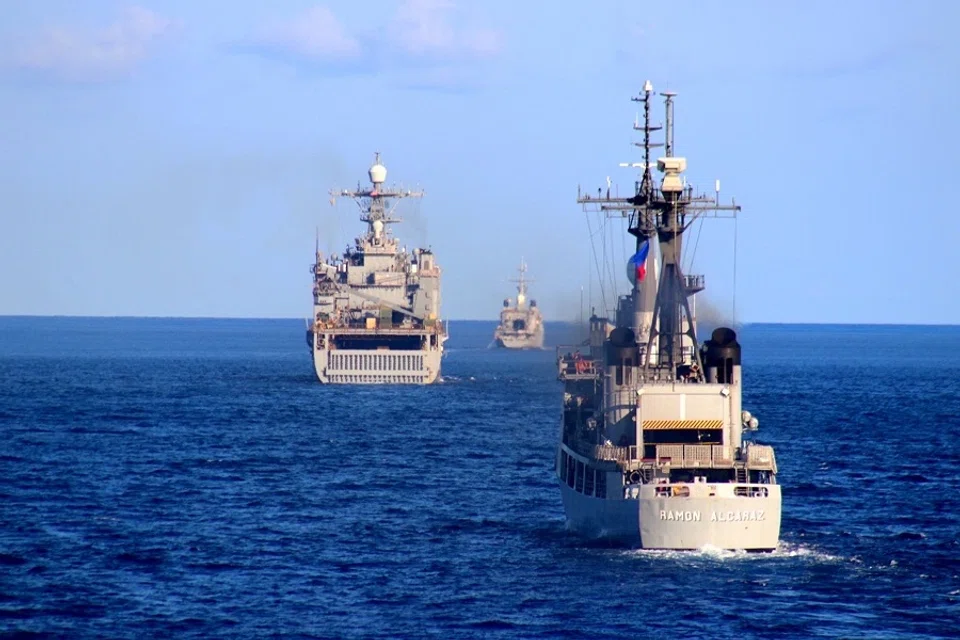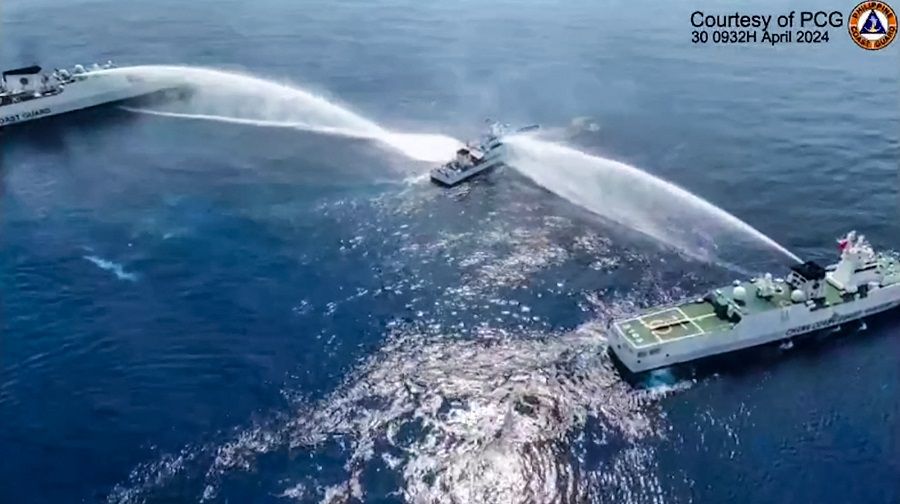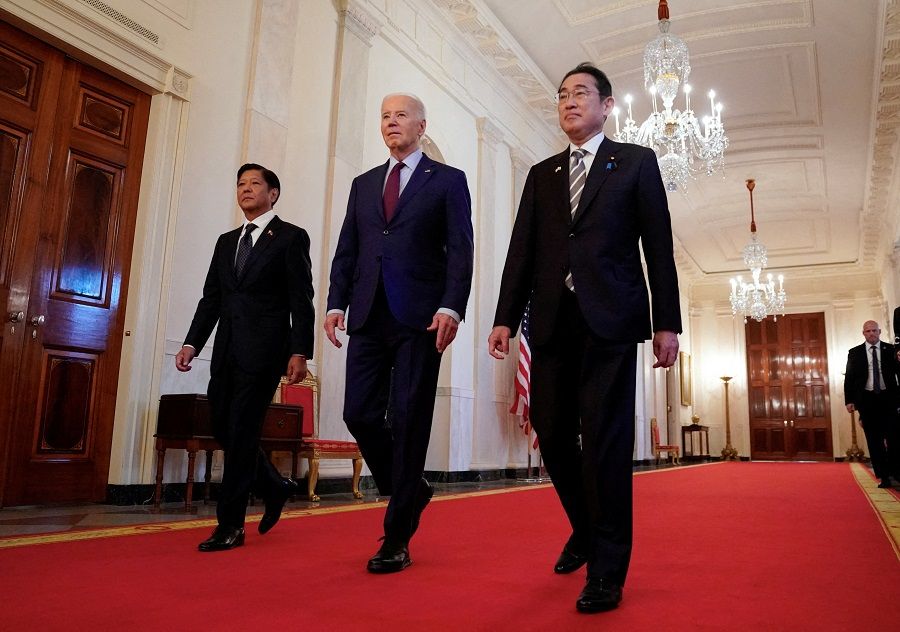Balikatan 2024 exercise will escalate South China Sea tensions

The annual Balikatan joint military exercise between US and Philippine troops commenced on 22 April and will continue until 10 May. A total of over 16,700 troops are participating in the military exercise, and 14 other countries, including Australia, France and Japan, are taking part in the exercise as observers.
The expansion of observers in this year’s Balikatan indicates the Philippines’ intention to grow its international support through the military exercise. As the first-ever US-Japan-Australia-Philippine joint drill had already been conducted in the South China Sea (SCS), it is more likely that some observers, Japan in particular, would become formal members of the Balikatan in the future. So, it is safe to say that the Balikatan is transforming from a bilateral exercise to a multilateral one between the US, the Philippines and its allies and partners in the coming years.
According to USNI News, the three-week-long Balikatan focuses on several high-end coastal defence activities, including counter-landing and sinking exercises. It is the first time that the sinking exercise is being included. Earlier, the Philippine military had announced plans to sink a retired Philippine Navy ship, the “BRP Lake Caliraya” which is of Chinese origin. The vessel will serve as the “enemy” ship during the drill.
The Philippines’ strategic position elevated
Although the Philippine officials said the BRP Lake Caliraya was planned as a target of the Philippine-US joint exercise as far back as July 2023, the news is perceived by the Chinese side as a clear provocative intent sent by the Philippine military. It is not only a symbolic message but also a clear warning to China: if China escalates retaliation actions, such as by using the water cannons against the Philippine vessels in the SCS, the Philippines is likely to respond even more strongly to weaken China’s countermeasures.
... the Philippines, together with Japan and South Korea, have become the main pillars of the US’s “first island chain” strategy aiming at containing China’s rise in the West Asia-Pacific.

Besides, the exercise’s operational area is situated in waters located 12 nautical miles west of Palawan Island, near both the SCS and the Taiwan Strait. This underscores the US’s strategy to connect the SCS issue with the Taiwan issue, establishing the Philippines as a frontier in resisting China’s military influence in the SCS and the Taiwan Strait.
This elevation of the Philippines’ strategic position aligns it with the significance of Japan and South Korea in the broader geopolitical landscape. In other words, the Philippines, together with Japan and South Korea, have become the main pillars of the US’s “first island chain” strategy aiming at containing China’s rise in the West Asia-Pacific. Given the rising tension in the SCS and the Taiwan Strait, the Philippines’ rising significance in US’s military deterrence towards China would cause China’s strong countermeasures.
Increasing defences against the Chinese
In addition, the Philippine Coast Guard (PCG) is also joining Balikatan for the first time. The PCG spokesperson Rear Admiral Armand Balilio said that the PCG is set to provide “perimeter security” during the exercise. It is believed that the US Navy has committed to enhance the PCG’s capability in “fighting” against the Chinese Coast Guard (CCG), thus undermining China’s “grey zone” strategy in the SCS. However, the struggles between the two coast guards of China and the Philippines might cause big troubles as there are no clear rules or emergency measures to deal with the conflicts between the coast guards.

The US has also deployed a midrange missile system in northern Luzon Island, which aims to counter the multi-domain threats posed by peer adversaries such as China. According to USNI News, the Philippine military lists the missile system as one of the assets forces that will be used during the Balikatan exercise, though it is unclear in what capacity. The article added that “Philippine military officials confirmed that it will be fired in the country during another exercise later this year”.
This is a dangerous action adopted by the Philippines. If we look at the serious consequences of the US deployment of the Terminal High Altitude Area Defence (THAAD) in South Korea, we will fully realise the high risks of this missile system on the China-Philippines relations.
It seems that the Marcos administration is more confident in maintaining a tough stance in the SCS disputes.
Taking a tougher stance in the SCS disputes
Meanwhile, the Philippines consolidated its hardliner approaches in the SCS disputes and non-engagement stance with China by being absent from the Western Pacific Naval Symposium (WPNS) held concurrently in Qingdao, China, though the Chinese PLA sent an invitation to the Philippine Army.
It seems that the Marcos administration is more confident in maintaining a tough stance in the SCS disputes. In the military domain, the US firmly pledged support to the Philippines during the US-Japan-Philippines Summit and the Balikatan exercise, with Japan also extending its backing.

Economically, the trio of the US, Japan, and the Philippines jointly launched the “Luzon Economic Corridor” in an effort to significantly reduce the Philippines heavy dependence on the Chinese economy. Although China remains the Philippines’ largest trading partner, Chinese investment in the country has noticeably declined since Manila suspended the BRI cooperation agreement.
Domestically, Marcos consolidated its power base by mobilising the public support via the confrontations with China in the SCS and crushing his opponents such as the former President Duterte and probably his daughter Sarah, the vice-president of the Philippines.
Given these developments, it seems China’s well-intentioned advice to the Philippines has been ignored by Marcos, either unintentionally or internationally. This has led to the intensification of tensions in the China-Philippines relations and the loss of a conducive atmosphere for bilateral talks. Therefore, the SCS tensions look set to continue to be intensified in the future.
